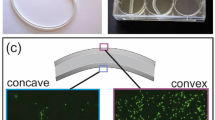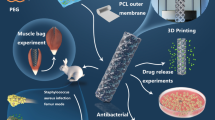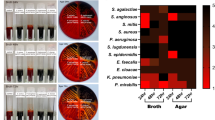Abstract
Medical devices are an integral part of therapeutic management; despite their importance, they carry a significant risk of microbial infection. Bacterial attachment to a medical device is established by a single, multiplying organism, leading to subsequent biofilm formation. To date, no preventative measures have impacted the incidence of device-related infection. We report the bidirectional covalent coupling of an engineered cationic antimicrobial peptide (eCAP), WLBU2, to various biological surfaces is accomplished. These surfaces included (i) a carbohydrate-based gel matrix, (ii) a complex polymeric plastic bead, and (iii) a silica-calcium phosphate nanocomposite associated with bone reconstruction. WLBU2-conjugated surfaces are shown to retain potent antimicrobial activity related to bacterial surface adhesion. This study provides proof of principle that covalently coating laboratory and bone-regenerating materials with eCAPs has the potential for decreasing infection rates of implanted devices. These findings have important consequences to the patient management component of our current health care technology.
Similar content being viewed by others
Article PDF
Author information
Authors and Affiliations
Corresponding author
Rights and permissions
About this article
Cite this article
Gonzalez, I., Wong, X., DeAlmeida, D. et al. Peptides as potent antimicrobials tethered to a solid surface: Implications for medical devices. Nat Prec (2008). https://doi.org/10.1038/npre.2008.1967.1
Received:
Accepted:
Published:
DOI: https://doi.org/10.1038/npre.2008.1967.1



